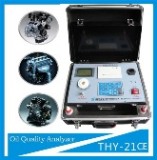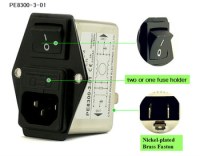Raspberry Pi 4
A little over a month ago the new Raspberry Pi 4 was introduced, the fourth iteration of the popular development plate. Today, ending August, we bring you a very special review, where we will try to analyze and break down the main uses that we can give to the Pi. The strong point of the Pi is... its community and its versatility. The amount of projects that the Raspberry supports is practically unimaginable: from having our own personal cloud of Google Drive, to make a Plex server (of local content or in the cloud), domotics with Home Assistant, reproduction with the popular program Kodi, make us a miniNAS, a mail server, music stations, classic games station, etc... Let's try, in this article, to make a compendium of the main uses and what most relate to our website: audio and video.

TECHNICAL SPECIFICATIONS
Before going into detail about the applications of the Pi, we can not overlook the specifications of it and the qualitative leap that has made in this fourth version. One of the most notable changes is the SoC (processor of the device), with which we pass from an old ARM A53 to a powerful A72, much more powerful than its previous version. Next to it, there are now 3 RAM memory modes: 1, 2 and 4 (in this analysis we are going to use the 4 GB version) that also goes from being LPDDR2 to LPDDR4, a change also quite noticeable in terms of speed. The GPU has also been completely remodeled: from a VideoCore IV we go to a VI and most importantly: it supports full decoding of HEVC 4K HDR BT.2020 10 bits (finally!). And as for little more specifications, there is also a slight change in the Bluetooth version, from 4.2 to the newest version 5.0.
As far as connectivity is concerned, the changes are even more profound, as practically everything is new. Instead of the classic full HDMI 1.4 port, we now have two HDMI 2.0b ports (in micro format, to save space), which, as we said, are fully compatible with 4K HDR at 60 Hz. One of the biggest revolutions we have in the network port, going from 10/100 ballast (megabit) to 10/100/1000 (gigabit) and also has its own chip, not shared with the USB as in version 3+, necessary to run at maximum speed (NAS, playback, etc.) according to today's standards. There are also two USB 3.0 now and the other two are kept in version 2.0. The GPIO ports are the same (40 pins) and we find a change in the power supply: now it does so from a USB Type C socket (very useful to be reversible and be the new standard practically accepted by everyone). The price is similar if we buy the 1GB version, slightly higher if we buy the 2 and already remarkable (55€) if we buy the 4GB, but in my opinion are completely justified and worthwhile.
All the sections that we are going to see today in this review, you will be able to consult them in the forum in a more detailed guide format, for example how to install and configure Kodi, Rclone, Home Assistant, etc.
DESIGN. IF IT WORKS, WHY CHANGE?
The design of the Pi4 follows the line of its predecessors: an ugly and "naked" development plate, with absolutely nothing else: no box, no cables, no microSD, no charger, nothing at all. But it is not necessary either, it is assumed that the buyer who is going to acquire it already knows what the matter is about: development, projects, domotics, etc., so we only have to buy a microSD (recommended 16GB or higher) and a USB charger Type C of 3A and 5V. That's more than enough to start our little adventure in this world.
As you can see in the next photo, the Raspberry Pi 4 is not bigger than a pack of tobacco (height x width x depth), being the design very sober. Given the report of temperature increase (partly due to the increase in power it has) both our companions martinrowan and us, we would recommend that you do not put a box to the Pi if you do not want to see how it increases its temperature exponentially. Better leave it as standard or, at most, put a box but open at the top.
MULTIMEDIA: KODI IS KING
Once the Raspberry is introduced in society and knowing all its specifications, let's start with the most used project, probably, in the world of video and audio with the Raspberry: multimedia player. For this we will use the popular Kodi player, with which we can make real virguerías. Kodi is the multimedia center par excellence in almost any player on the market, making this software almost a system of its own.
What makes Kodi different is its versatility and playback quality, supporting many features that the most demanding will ask: from automatic change of Hz, to automatic change of resolution, range, deinterlacing, HD audio passtrough, Atmos, scalers, etc.. In addition to all this, Kodi brings together the best possible features in almost any other area: addon installation (with video addons we can watch almost anything from movies to series), complete integration with Google Drive (see below), a spectacular graphical interface that we can completely change to our liking, supreme quality in terms of video/audio/hz/fps playback, flexible configuration of libraries (that we can export, import, etc.), TV tuning (TDT, satellite, IPTV, etc.), full 3D support, ambilight, etc.
We can choose to install Kodi in two ways: either in an operating system where essentially everything is Kodi (LibreELEC) or as an application within an Operating System (with Raspbian) -as we would do in our PC, for example. We, since we are going to use the Pi to have several projects running at the same time, have opted for Raspbian, which being a complete operating system based on Debian, allows us to install any application without problems.
DOMOTICS: OK, GOOGLE
If Kodi is the king of multimedia, Home Assistant (or Hass.io in its embedded version) would be the queen of home automation dancing. This application, fully compatible with Raspberry Pi 4, will allow us to link almost any intelligent home automation device at home with our Google Home or Alexa, in addition to having its own app for Android and iOS. In our analysis, we have tested it with 20 Xiaomi Aqara window door sensors, a Vaccum 2 vacuum cleaner, a Denon X3500H and a LG OLED E9, as well as several devices such as a PS4, and so on. Once we have installed and synchronized it, it will allow us to create a Home Assistant Cloud account (for payment, although we can get the same result doing it manually) to link it with a Google Assistant and/or Alexa device; in our case the chosen one has been a Google Home Mini.
And what is the strong point? Well, it accepts protocols and devices that do not work with Google or Alexa, such as Aqara or Ikea devices; acting as a "bridge" and also as a centralizer: you can have several devices of various brands and have everything in the same app. And it works like a charm: we can turn on the lights at home talking to our Google Home ("Ok, Google, turn off the lights in the kitchen"), we can send videos of Youtube or an episode of Netflix to our OLED or have to record the surveillance camera of the house when the motion sensor -also integrated with Home Assistant- detects something suspicious. Or that the air conditioning or heating is activated automatically when the temperature or humidity sensors detect an excess of heat or cold. We can also create intelligent scenes where, for example, when we tell our Google Home "it's movie time", Home Assistant will automatically turn on the Denon in the corresponding HDMI input, turn on the TV, turn off all the lights in the house, activate the air conditioning and, if we also use a Nvidia Shield TV, Kodi will open the movie section, just so that we only have to choose one (we can also do it by voice) and enjoy. Just enjoy.
Contact : sabine betro, 076279832
Good deal: buying from seller
We invite you to read our terms of use. You can also visit our FAQ section and see our information section on the risks associated with counterfeiting.
|
This page is about importers and exporters of Raspberry Pi 4 Search in a category : Electronics / Computers Search in a category : raspberry |
Tuesday, December 23, 2025
Quantity : 1000set - Price : Negotiable
Ⅰ.Product efficacy: Main Functions: ◆Determining the degree of pollution in lubricant within 5 minutes; ◆Detecting percentage of water content in the lubricant within 3 minutes; ◆Detecting metal particles beyond 60um; ◆Determining the new purchased lubricant is qualified or not...
Xi'an Tianhou filter Technology Co., Ltd
- checkoil8
- 710075 - Xi'an
- 86 29 86691978
Tuesday, December 23, 2025
Quantity : Min.Order - Price : US $1 - 20 / Piece
- Quick Details - - Place of Origin: Jiangsu, China (Mainland) - Brand Name: Emcpioneer - Model Number: PE8300-3-01 - Type: EMI Filter - Transfer Function: Low Pass - Package Type: Surface Mount - Nominal Center Frequency: 50/60Hz - Insertion Loss: 100db - Rated Current...
Changzhou Pioneer Electronic Co.,Ltd.
- czpioneer
- 213022 - xinbei
- 86519 88293619
Wednesday, October 21, 2015
Introduction: LPCE-1 Integrating Sphere Spectrophotometer Test System is suitable for photometric and colorimetric measurement of luminaries such as Energy-saving lamps, Fluorescent lamps, HID lamps (high voltage sodium lamps and high voltage mercury lamps), CCFL and LED. The measured...
Lisun Electronics (Shanghai) Co., Ltd.
- lisun008
- 201803 - Shanghai
- +8618917996096









